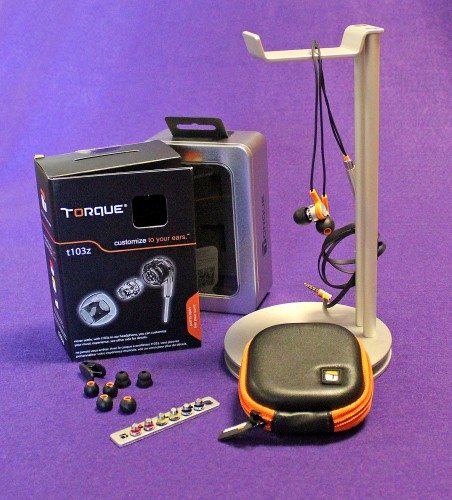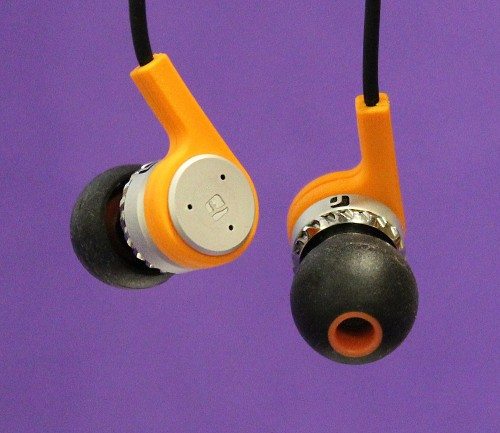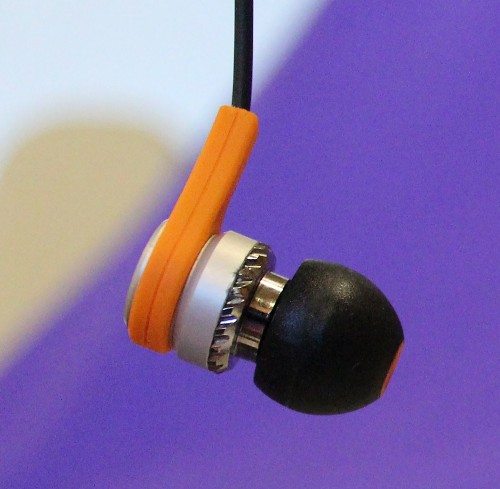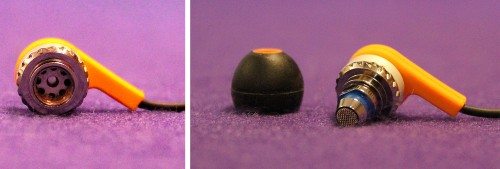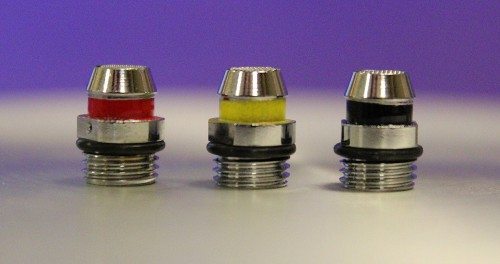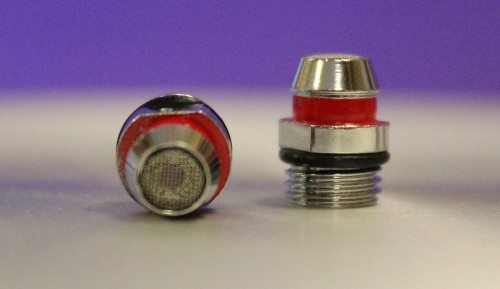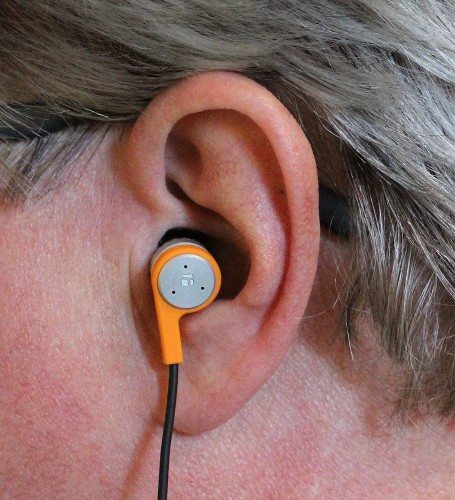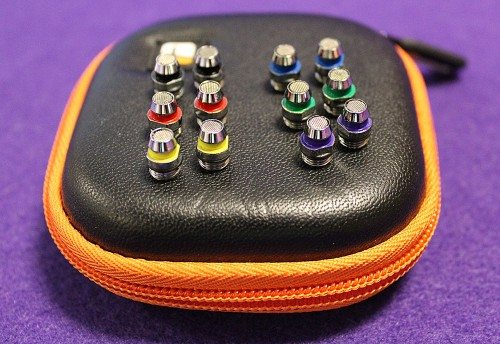In 2012, I reviewed the excellent – but incredibly expensive – Audeo PF232 earphones. What made them unique was that they had replaceable filters so anyone could fine-tune the sound to their taste. Well, anyone with super eyesight and steady hands, that is. The filters were so small that they required a special, hard-to-use tool, and if dropped, were almost impossible to locate. Spring forward to 2013, and Audeo has pulled out of the earphone market, but the idea of filters remains interesting. Torque Audio has taken up the mantle (sort of) with the new t103z in-ear-headphones. Torque calls their filters “valves” and has managed to make them uber-easy to swap depending on your mood. The question is; are they successful?
I’ve had the t103z in-ear-headphones (earphones) for a few months now, and to say they are unique is almost an understatement.
First let’s deal with the construction: the t103z earphones are nicely made from aluminum and high-quality orange plastic trim. They are extremely tough for active users as well as fashionable enough without being garish. While I’m not a fan of orange as an accent color (there is no other option), it’s subtle and not off-putting – just not my preference. The feel is one of quality. They come packaged in a nice, metal box that can be used to store all the parts later. Even the much more expensive PF232s didn’t feel this well-made. Also included is a semi-hard case that allows for storage of the included valves. There are four sizes of tips to choose from. Once again, none of them worked well for me – a common occurrence with many reviewed earphones. I have a pair that I use that allows me to accurately gauge the sound. A remote/mic is included which works as advertised, although I seldom use this feature.
The valves (filters) are also made of metal and solid feeling. I’ve accidentally dropped them without harm – but don’t try this at home. Plus, they are large and easy to find. The valves come screwed into an indestructible base that has a clever built-in wrench that helps attach and remove the valves from the earphones. However, for most people, fingers can do the job just fine.
The t103z earphones come with three valves in three easily identifiable colors bands. Let’s deal with each one:
Note: I had to set up perimeters for being able to accurately test the valves, so I limited the test to three songs all played on the same player. I used the Fiio X3 instead of my trusty iPod Classic, mainly because I will be reviewing it soon. Plus, it has a better digital audio convertor and amp than the iPod Classic, and it plays higher-res files in more formats. The three songs were: “Cello Song” by Nick Drake, “Visage” – the original 12″ dance mix by Visage (lots of bass thump), and finally, “Tocatta and Fuque” by Bach – recorded in a church using binaural microphones.
The red-banded valve – called “reference” – does the least. Simply stated, it presents the music as your source (smartphone, iPod, etc.) intended, no alterations. This sound is preferred by studio engineers for its realism. The drawback to this approach is that it’s accurate to a fault, not forgiving of any flaws in the recording. This approach can be tiring for extended listening. That doesn’t mean I didn’t like it. I’m a fan of audio realism, just not all the time.
The black-banded valve – “clear” – accentuates the treble frequency. This results in a brighter sound, meaning more detail can come through, often too much detail for my ears. Plus, the bass is dialed down, which can leave music feeling a bit too clinical. In many songs, sibilance (that ssss sound) becomes noticeable. True audiophiles generally lean in this direction, but since I’m not one of them, I don’t.
The yellow-banded valve – “deep” – is exactly what it says. This filter accentuates the bass. Think Beats or Skullcandy earphones and you get the picture. Interestingly, the bass using the deep valves was not nearly as bloated or boomy as the bass filters with the PF232s, so kudos to Torque for getting this right. The bass in the Visage song was very strong (no surprise), but the organ in the Bach piece was so low that I swear it rattled my brain — and with no distortion! This was a total surprise.
These three filters each give a slight nod to their respective uses. I say slight, because the differences are not as pronounced as I would have expected. The differences with the PF232 filters were much greater. If the t103z are the first earphones you’ve used, you may not even hear the difference between filters. But after hours of use, those differences will become noticeable.
Torque sent me three additional filters that allow even more customizing. These are available individually from Torque at extra cost. Ironically, my favorite filter is in this group. Plus, the audio differences are even more pronounced within this group. Go figure.
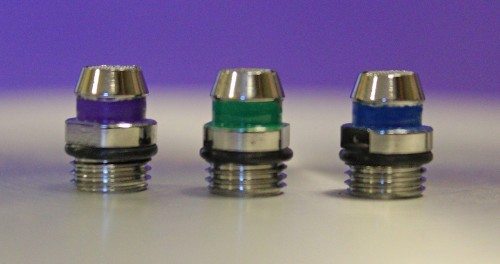
The blue-banded valve – called “smooth” – is similar to the yellow or deep valve, but with a less drastic bass bump. This is good for jazz music. The sound is mellow and easy on the ears. I would prefer this filter if I were commuting on a bus or train, because bass helps drown out distracting ambient noise. One issue I had with this valve is that the bass crept into the other frequencies, unlike the yellow filter. This is okay at normal volume, but when cranked up, it becomes noticeable.
The purple-banded valve – called “bliss” – is Torque CEO Yasu Yamamoto’s favorite valve. It is tuned to his personal preferences, something he says provides a great overall audio experience. I couldn’t disagree more. It is my least favorite valve. One issue I had with this valve is that the volume was muted when compared to the other valves. It sounded like I was listening with cotton in my ears. I much prefer clarity throughout all the frequencies.
The fact that Mr. Yamamoto and I disagree on the purple valve is a good thing. Why would I say that? Think about it – there is a choice of six different sound preferences available. Six — for one earphone! No one is going to agree which is best, so the only “correct” valve is the one that sounds best to you. They’re your ears, after all.
The green-banded valve – called “balance” – is my favorite valve. This valve slightly accentuates the bass and treble while dropping the mids (normally the vocal range) just a bit. This can sometimes make a song feel less intimate, but with this valve, it wasn’t an issue. I just liked the overall effect it had on the music I listen to. There were exceptions: Visage and Bach were a bit too bass-heavy, although not intrusive as with the blue valve. The black valve worked best on this kind of music. If I wanted to listen to Visage exclusively, I would switch valves, but if I’m just shuffling through songs, the effort to change valves isn’t worth the bother.
Not surprisingly, the green valve became my go-to valve. It’s the one I use almost exclusively. Unfortunately, it’s only available as an extra-cost option and not included in the t103z box. Plus, it’s too bad you can’t sample the three extra valves before buying. Just because I say the green valve is best doesn’t mean anyone else will agree. Chances are that one of the three included valves will satisfy the first-time buyer. Only when he or she becomes curious how the others might sound would they consider making that extra purchase.
Torque has done a good job of creating an earphone that feels like three, or four, or five, or even six. At first glance, the price may seem steep, but once you realize they can be adjusted to fit any mood, they become a bargain. Depending on what valve is chosen, the Torque t103z in-ear-headphones can satisfy just about anyone.
ASIILOVI Open Ear Headphones VG332, Air Conduction Headphones Bluetooth 5.3 Earbuds, 16 Hours Playtime Dual 16.2mm Dynamic Drivers
$13.99 (as of December 11, 2025 18:04 GMT -05:00 - More infoProduct prices and availability are accurate as of the date/time indicated and are subject to change. Any price and availability information displayed on [relevant Amazon Site(s), as applicable] at the time of purchase will apply to the purchase of this product.)EXMAX 3.5mm Single Side Earphone Earbud One Ear Headphone for EXD-101 ATG-100T ELGT-470 Wireless Tour Guide System Receiver Touring Groups Radio Podcast Laptop MP3/4 Tablet PC Skype YouTube (Left)
17% OffProduct Information
| Price: | $179.95 US |
| Manufacturer: | Torque Audio |
| Requirements: |
|
| Pros: |
|
| Cons: |
|

